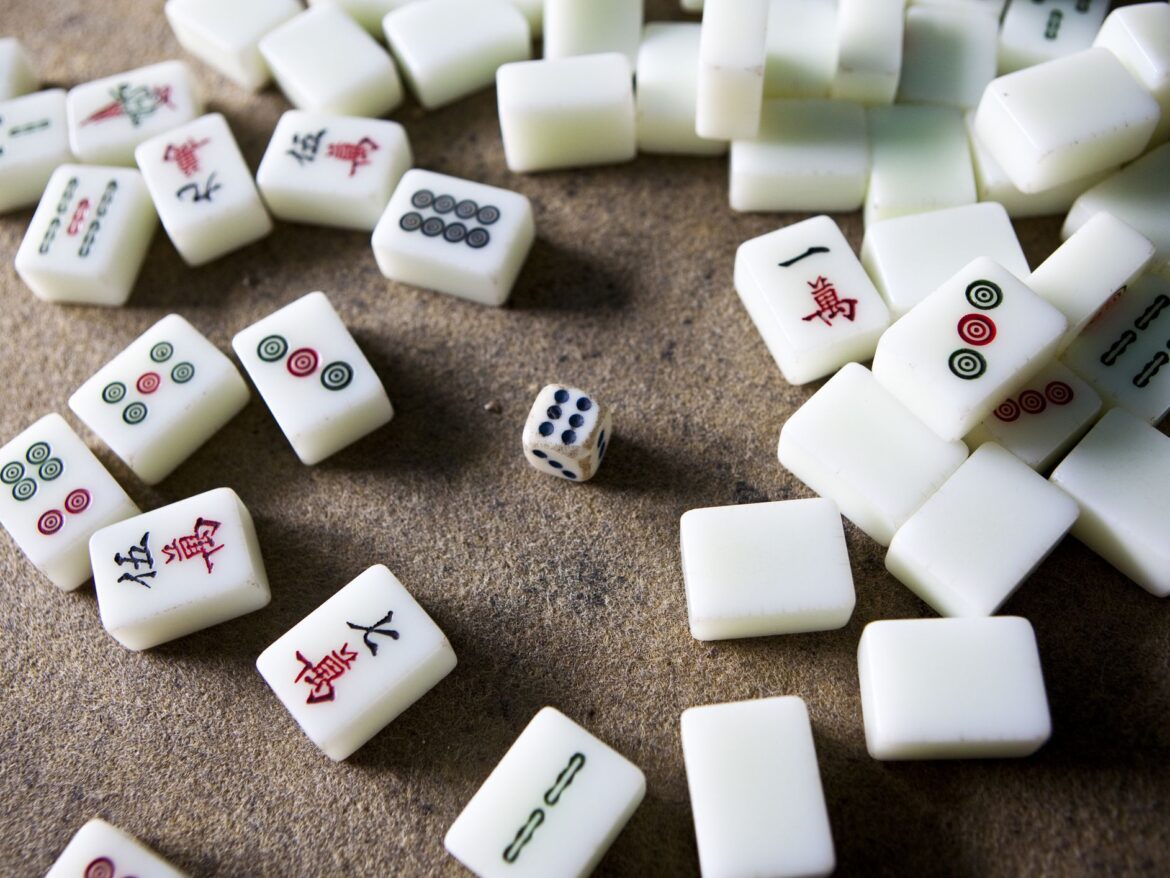1.4K
The rules of Mahjong differ depending on the level of difficulty. We would like to introduce you to an easier version of the Chinese game for beginners, which you can also play with your children. However, Mahjong can also be played on the computer.
Mahjong: The game rain simply explained
Mahjong is an ancient Chinese parlour game. Depending on who is playing, the rules of the game may differ. With children, it is advisable to opt for a simpler version first. You can play the game with two or four people. It is best to sit down at a square table to play.
- In the game box there are 144 or 136 rectangular game pieces, also called bricks, and two dice. Symbols are printed on the tiles: dragons, coins, bamboo, numbers and winds. You will use these to form your pieces later. There are also bonus tiles (flower tiles and seasons).
- First, shuffle the tiles facing down. With 144 tiles, each player now gets 36 tiles and builds them up in two consecutive rows of 18 tiles each in front of them. The tiles face downwards. The finished rows are pushed together with the corners so that a square wall is formed.
- Now each player rolls the dice once. The player with the highest number becomes the leader and may begin. The game is played clockwise. But first, each player takes 13 pieces from the wall, but so that the square wall as a whole remains intact. The drawn tiles are placed in front of them so that the other players cannot see what is on the tiles.
- Each player has the goal of getting four pieces (triplet (three identical pieces), row (three consecutive numbers of the same basic colour) and a pair (two identical pieces). The player who succeeds wins the game round. He calls out “Mah Jongg” and shows his pieces to the other players. The winner is then the game leader for the next round. There are also quads (Kong), but then you have to draw an extra piece from the wall to make up for the fourth piece.
- Now the game starts and the player who starts draws a stone from the wall. He can either place it face up in the middle of the wall or, if he can use it for his pieces, he places another piece from his 13 pieces in the middle.
- As soon as a player places a piece in the centre that another player can use to form a figure, the latter may shout “pong” in the case of a three of a kind or “kong” in the case of a four of a kind and take the piece. As proof, however, he must then place his piece face up in the middle of the wall. In the case of a four of a kind, an additional piece is taken from the wall. When completing a row, one calls out “chow”. However, you may only take a number from the middle if it is your turn. In this case, the row is also turned face up.
- Tip: When buying your game pieces, make sure that there are also small Arabic numbers or letters printed in the top corner. This will make the game easier for you and your children
Computer: Rules for playing Mahjong
There is also mahjong as a computer game. Here’s how it works:
- The rules for playing Mahjong as a computer game are not difficult and can be learned within a few minutes. The aim of the game is to remove all the tiles on the board.
- Depending on the variant, you have to remove all the stones with the highest possible score or as quickly as possible. You can do this by always clicking on two stones with the same motif. These will then be removed and you can search for the next identical motifs.
- You may not click on stones that have neighbours to the right and left. Also, you cannot select stones that still have a stone above them. So you may only use stones that have only one stone left on either the right or the left or that are completely free.
- Always try to remove the stones that expose new stones for you. If a combination exposes few or no stones, leave them for later.
- Try to expose the horizontal lines first, as it is usually more difficult to remove them.You can also download
- Mahjong and install it on your PC. There is a free version in our download area.
